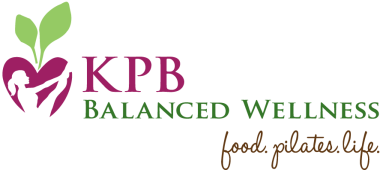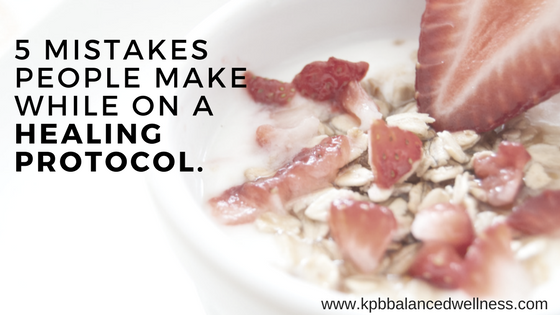It was summer, we were staying in a little condo and taking a long weekend away as a family. Just a few days before I had done a blood draw for food sensitivities and was nervously awaiting the results. I checked my email and found the lab results had come in. I was so anxious to find out the results, I quickly opened the email.
Then, bam. 24 foods were on my list. Holy Toledo. Some things I wasn’t surprised, some things were total staples in my food world. Some things gave me instant answers, “oh the rice last night, that was why I was so bloated.” Then I realized that all the meals we had planned for the weekend had at least one of the foods on my ‘no list’ on it. Uh-oh.
My food world was rocked. I had to make some major changes to start this healing protocol and I wasn’t sure how it was going to happen. Truth be told, healing protocols are HARD. And if you are reading this, maybe you’ve been through one too or about to try to do one.
But, in order for a healing protocol to work, it completely depends on the willingness and commitment of the client. I often comment on how it is kinda easier to work with Pilates clients for their fitness goals. Why? They come in and see me 3 times a week and I put them through the workout. But, with my nutrition clients, I can’t go and live in their kitchen for 4 months. Although, sometimes I’d kinda like to, I so badly want to see them improve. Short of moving into everyone’s kitchen to help everyone succeed, I’ve highlighted the top mistakes people make and how you can avoid them so you can thrive on your healing protocol.
-
Too Many Changes.
I do believe in ripping off the band-aid and just jumping in at some point. But, if certain habits aren’t in place yet, this is just a recipe for disaster. It is really important to have some form of a self-care practice in place before embarking on a healing protocol. If you aren’t yet prioritizing you, suddenly trying to create a massive self-care practice isn’t going to be sustainable.
For instance, with my clients, I prefer them to have already removed gluten, dairy and sugar before we do any sort of food sensitivity testing. I’ve learned (the hard way) that if you haven’t learned to navigate the world without these foods, adding in more foods to remove just becomes too overwhelming. This is why I’ve created the Just Thrive package, it is a beautiful deep dive into self-care on all levels, it sets the foundation for better health and for some, this is all that is needed.
-
Only Committing Part of the Time.
I totally get it. You don’t want to be a burden when you go to dinner at a friends’ house. You don’t want to have to worry about what food you are eating while on vacation. You just want to enjoy your girl’s weekend. Except that, it is just preventing your progress.
I liken it to healing a broken leg. You don’t get to take the cast off, do a bazillion jumping jacks and then put the cast back on and expect to have the same healing as you would if you didn’t take the cast off. But you also know, wearing that cast is NOT permanent. Neither is being on a healing protocol. It is temporary. Yes, it can be a pain in the rear at times. Yes it can be hard work. So is wearing a cast. But for it to work, you have to commit to it. (When was anything worth having, easy?)
-
Not Staying on the Protocol Long Enough.
Using food as medicine is amazing. It works. But this isn’t a five-day Z-pack. Nor is all the damage reversed in a month. You are often feeling better a month in, but this is not the time to jump back to your old lifestyle. This is the time to hunker down and settle into your new self-care habits and nurture you. Really commit to healing you, taking care of you. I once read that for every year you have been sick, give yourself a full month of time on a healing protocol to reverse it. This provides some good expectation management. This may sound long, but in the big picture it goes by faster than you think.
-
Not Having Practitioner Support.
I know, here we are in the Information Age with loads of blog posts, Youtube videos and podcasts telling you what and how to do just about anything and everything. Except for one tiny detail. None of it is specific to you. And it can be pretty easy to try and do ALL THE THINGS and then find out that you can’t keep up and it is exhausting and then you end up doing NONE of the things.
Having a practitioner saves you time. And time is something you can’t get back. Stop being so hard on yourself and saying, “I should be able to figure this out.” (I know that line, I’ve said it many times myself. It is always easier when I finally ask for help.) Having a practitioner who spends her days studying the exact thing you are struggling with is a huge time-saver and relief. Not only that, when things get challenging, she’ll pull you through it. You want to get to the other side. Give yourself the best shot at it.
-
Not Believing it Will Work.
Mindset is huge. Mindset is huge. Mindset is huge.
If you don’t believe in what you are doing, if you don’t see yourself getting better, you won’t. It doesn’t matter if you have the best protocol and the best foods and the best support system. If you are constantly thinking of yourself as a sick person, second-guessing the protocol you are on and assuming you are just destined to remain sick, you will. Dare yourself to think otherwise. I know it can be totally scary to think that way. This is where it is so helpful to have a practitioner who can coach you through these moments. A practitioner can see how the self-sabotage creeps in for you and finally get you to work through it. It really can make all the difference. Be open. You might just surprise yourself.
Those 24 food sensitivities? They are a thing of the past. It is a glorious thing.
Next week, I’ll share my top success strategies to get you through those tricky protocols and food sensitivities so you can get on with your life. It can be done!


